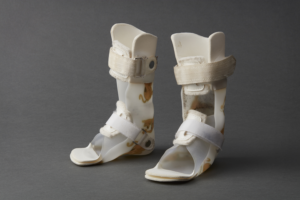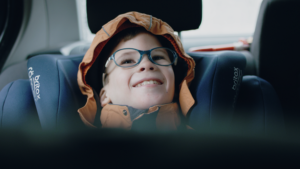 3D printing in the military isn’t just about fabricating weapons like grenades, missiles, and warheads. The US Marine Corps has embraced the technology with enthusiasm, using it to research and complete a wide variety of projects. These days, logistics in particular is a fairly complicated defense sector, and investing in 3D printing has allowed the Marines to learn how to travel lighter to missions, with more adaptability…par for the course for this branch of the military, which counts “Improvise, Adapt, and Overcome” as its unofficial motto.
3D printing in the military isn’t just about fabricating weapons like grenades, missiles, and warheads. The US Marine Corps has embraced the technology with enthusiasm, using it to research and complete a wide variety of projects. These days, logistics in particular is a fairly complicated defense sector, and investing in 3D printing has allowed the Marines to learn how to travel lighter to missions, with more adaptability…par for the course for this branch of the military, which counts “Improvise, Adapt, and Overcome” as its unofficial motto.
The USMC’s Next Generation Logistics Innovation group (NexLog) was established in 2015 to advocate for the use of modern technologies, such as 3D printing, on the front lines. The initiative, led in part by Col. Howard Marotto and Captain Matthew Friedell, speeds up development and integration of these technologies within the Marine Corps, and gives the Marines a way to develop solutions to problems directly affecting them and their environment.
“We see it as being absolutely transformative. It’s not just about untethering yourself from the supply chain,” Marotto said. “It’s also about being able to rapidly innovate to the threat in the field.”
The Marine Corps is more than ready to use 3D printing in any way they can, and LulzBot 3D printers from Aleph Objects are now being used by Marines in their important mission: to help build and grow a more innovative culture.
When the US military first got wind of 3D printing, the technology originally provided the perfect solution to a long-time problem: a continuing shortage of available spare and replacement parts for equipment that was getting older, thus more difficult to maintain.
Marotto explained, “A lot of our older equipment in the Marine Corps, nobody wants to make those items or parts for. So we might have to become our own manufacturers on certain low-demand, obsolete type items because the industrial base won’t support us, because there’s no money in it.”
In one of the many ongoing efforts to use the technology to “Charlie Mike” (Continue Mission), the Marines have started to design and 3D print replacement handles for their Humvees on LulzBot 3D printers. The standard vehicle handles are extremely fragile – not good if you’re on the front lines and need to get up and moving quickly.
LulzBot 3D printers have been a good choice for the Marines, thanks in large part to the LulzBot MOARstruder Tool Head – a popular option for applications that require strong parts and rapid prototyping capabilities.
“I use a MOARstruder on the thing and it prints in an hour, and you can’t break that thing…that’s my favorite example of using a LulzBot and more specifically, the MOARstruder,” said Friedell.
Another application for 3D printing in the Marine Corps is providing solutions in expeditionary environments.
“It’s stuff like buckles that you don’t think would be very valuable, but they’re huge in an expeditionary environment,” Friedell said. “If your buckle breaks that’s holding your weapon, your life is gonna suck for the next 10 miles or 3 weeks until you can get a new plastic buckle. So having that ability is huge.”
A recent example is a small snowshoe clip, 3D printed using a strong, flexible resin, that the Marines developed at the Mountain Warfare Training Center (MWTC) in northern California. Marines are now extensively training in very cold environments, which can cause a slew of new problems for their important gear.
Friedell said, “We have a snowshoe in our inventory and Marines keep breaking small retaining clips. So we had Marines redesign them and we’re actually able to 3D print them and throw them on the snowshoes, and now we have snowshoes that don’t fall off our feet.”
The Marines were able to call on their trusty LulzBot 3D printers to come up with a fast, inexpensive solution to this particular problem.
“I’ve been a big proponent of LulzBot [3D Printers] because it’s just bulletproof, and that’s the reason we put it out there. We literally load them up in [watertight] cases, unbox them…. they level themselves, and they’re printing in five minutes. So the durability of them, the flexibility of them, is awesome,” Friedell said.
Because LulzBot 3D Printers are so reliable, durable, and easy to use, Marines stationed in difficult environments all around the globe can put them to work in tasks ranging from mission-critical to simply making everyday life more convenient.
To learn more about the Marine Corps’ use of LulzBot 3D printers, check out the video here.
Discuss this and other 3D printing topics at 3DPrintBoard.com or share your thoughts below.



























